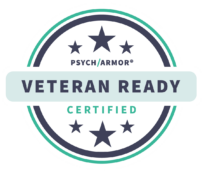How to Quit Smoking or Vaping in Recovery
While both smoking and vaping may seem like less harmful alternatives to other substances, they still pose serious risks to your physical and mental health. While many people either pick up or continue their smoking habit during a substance use treatment program, research indicates that it actually hinders progress, triggers relapses, and potentially introduces new challenges in recovery.
For example, the Mental Health Foundation (MHF) reports that while a lot of people vape or smoke as a form of stress relief, that’s not really what’s happening. “When a person smokes, nicotine reaches the brain within about ten seconds. At first, nicotine improves mood and concentration, decreases anger and stress, relaxes muscles, and reduces appetite,” the organization states.
In reality, these feelings are short-lived and soon give way to withdrawal symptoms and increased cravings—thus actually increasing anxiety and tension, which can prompt a relapse. “Smoking reduces withdrawal symptoms but doesn’t reduce anxiety or deal with the reasons someone may feel that way,” MHF adds.
Additionally, the U.S. Food and Drug Administration indicates that 7,000 chemicals are introduced into your system with every puff. Consider this essential point: “nicotine, including nicotine salt, is listed by the Environmental Protection Agency as an acute hazardous waste,” So if your overall intention is to become healthier and reduce compulsive chemical dependency, it’s probably in your best interest to stop smoking.
8 Tips to Stop Smoking or Vaping in Recovery
Without question, quitting another behavior while getting treatment for substance use disorder or alcohol use disorder might be a difficult process. However, it’s not only possible but also incredibly rewarding to overcome this harmful habit. Here are several suggestions you might find helpful.
- Seek Support
When you’re ready to quit, this is an essential component. Whether it’s through a therapist, a support group such as Nicotine Anonymous, or even trusted friends and family, having a support network makes the process less isolating and more manageable. Mutual aid groups provide encouragement, advice, and accountability throughout the process.
- Replace the Habit
To release key associations related to smoking or vaping, it’s important to replace the habit with something positive. For instance, engage in deep breathing exercises, chew sugarless gum, or take walks when the urge to smoke pops up. Replacing the physical act of the habit with a wellness behavior distracts the mind and eases cravings.
- Identify Triggers
In recovery, certain situations or emotions act as triggers for smoking or vaping. It’s essential to identify these triggers—such as stress, social situations, or particular locations—and come up with strategies to manage them, such as urge surfing. By recognizing when you’re most likely to crave nicotine, you can better prepare yourself to respond in healthier ways.
- Use Nicotine Replacement Therapy
Not everyone can simply quit “cold turkey,” and that might cause additional complications. So, nicotine replacement therapy (NRT) might be a helpful tool. NRT products such as patches, gum, or lozenges help you manage cravings and reduce withdrawal symptoms while your body gradually adjusts to being nicotine-free. These therapies can be especially useful during the early stages of recovery when all cravings are at their strongest.
- Stay Active
Exercise is key to quitting smoking successfully. Regular physical activity helps release endorphins, which can make you feel better and alleviate the discomfort of withdrawal. Staying active not only helps your body heal during recovery but also provides an outlet for your energy and emotions, reducing the urge to smoke or vape.
- Set a Quit Date and Stick to It
This helps you mentally prepare for the change. Make sure to choose a date that allows you to plan ahead and build up your support system. Mark it on the calendar and take the necessary steps to eliminate the habit from your life. Then, when the day arrives, make a commitment to quit.
- Consider Professional Help
Sometimes, quitting smoking or vaping requires professional intervention. If you’ve tried quitting on your own without success, it may be helpful to work with a counselor or addiction specialist during a recovery checkup. They might suggest effective approaches such as cognitive behavioral therapy to help you identify the psychological patterns and triggers associated with nicotine use.
- Be Patient and Persistent
Recovery from any type of compulsive behavior takes time, and quitting smoking or vaping is no different. You may experience setbacks along the way, but it’s important to remain patient with yourself. Celebrate small victories, and remember that each day without nicotine is a step toward better health.
Seabrook’s Whole-Person Health Approach
Our four award-winning treatment centers in New Jersey are CARF-accredited facilities—a designation that ensures best practices in evidence-based addiction recovery and behavioral health. At the core of our treatment philosophy is a commitment to whole-person health. We offer numerous complementary wellness options you can use as a foundation for your intention to better yourself physically, emotionally, mentally, and spiritually. Talk to a member of our admissions team to learn more.




